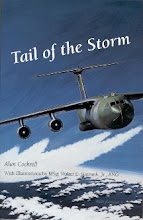The big change is pilots will now have 10 hours minimum rest. That's up from nine. Click here for details. That’s better than nothing I suppose, but then there's this: if you report for duty between 0500 and 1959, (that's “Way-too-Early” and “End of Happy Hour” for us Air Force types) you can fly nine (9) hours un-augmented (basic 2 person crew). That's down from the previous rule, which was eight (8). So, you see there's good news and bad news. And it's worse than you think. Here's why.
An east-bound Atlantic crossing from the upper East Coast to Western Europe typically takes less than 8 hours, but the return, which is against the winds, takes more than eight. Therefore airlines use a relief pilot, which allows them to fly longer, even though they don't need the relief pilot for the goin' over leg. Now they may not need one for the coming home leg either.
See what's coming? Or rather, what's going? Going out, that is—relief pilot. Yes, soon when you go to western Europe you may have only two pilots up front the whole way. This is the manna from heaven airline companies have waited for. Now, not only can they shed themselves of some of those pesky pilots, they can sell an extra seat, because a rest seat for pilots won't be needed.
But, you say, so what? I work 8-9 hours about every day. Yep, going to London with two pilots is pretty easy; further east destinations are a little harder but doable. Here's the rub: those trips typically don't start until late afternoon or evening. So, 8-10 hours after being up since your normal get-up time you start work. The most demanding part of your flight, the approach, occurs at about 0200 on your body clock, and you have not had a rest break.
And coming back from Europe we usually start out at about 0100 on our body lock. How about pulling a nine hour shift with no rest and no break after getting up an hour after mid-night?
Incidents of pilot deviations will go up. Somebody will pay for this change, and the price might be enormous.
If any of you Mach-Rangers think I've mis-interpreted this or gotten my facts wrong, sound off.






















